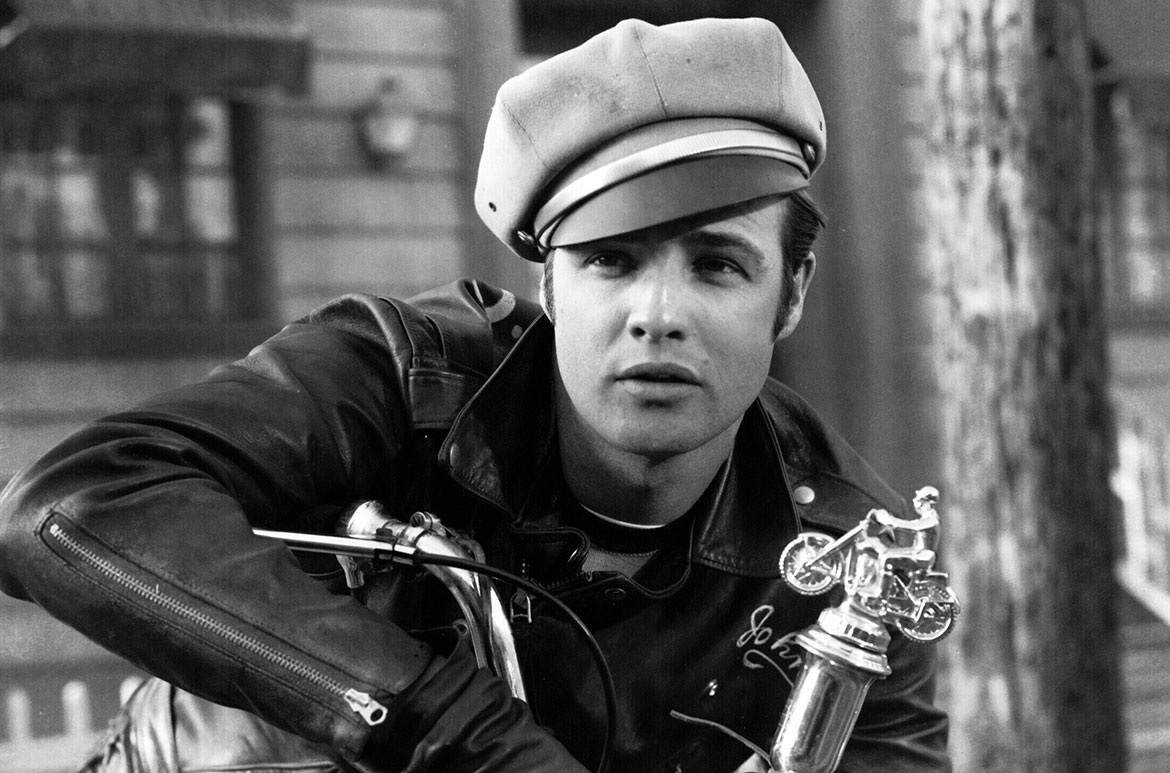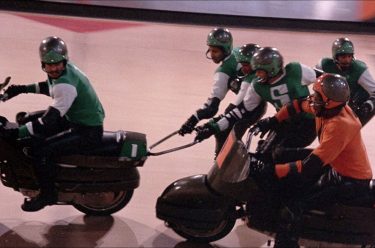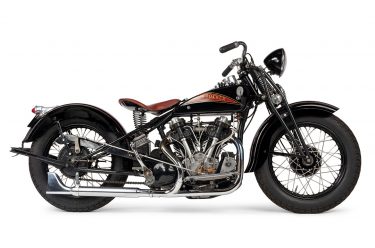In association with the Gallery’s major summer exhibition ‘The Motorcycle: Design, Art, Desire’, the Australian Cinémathèque at the Gallery of Modern Art (GOMA) presents the free program ‘Motorcycles on Screen’, which explores the rich history of the vehicle in cinema, from the silent era to today.
‘The Motorcycle’ exhibition was in Brisbane’s Gallery of Modern Art (GOMA) from 28 November 2020 until 26 April 2021.
Film: Easy Rider
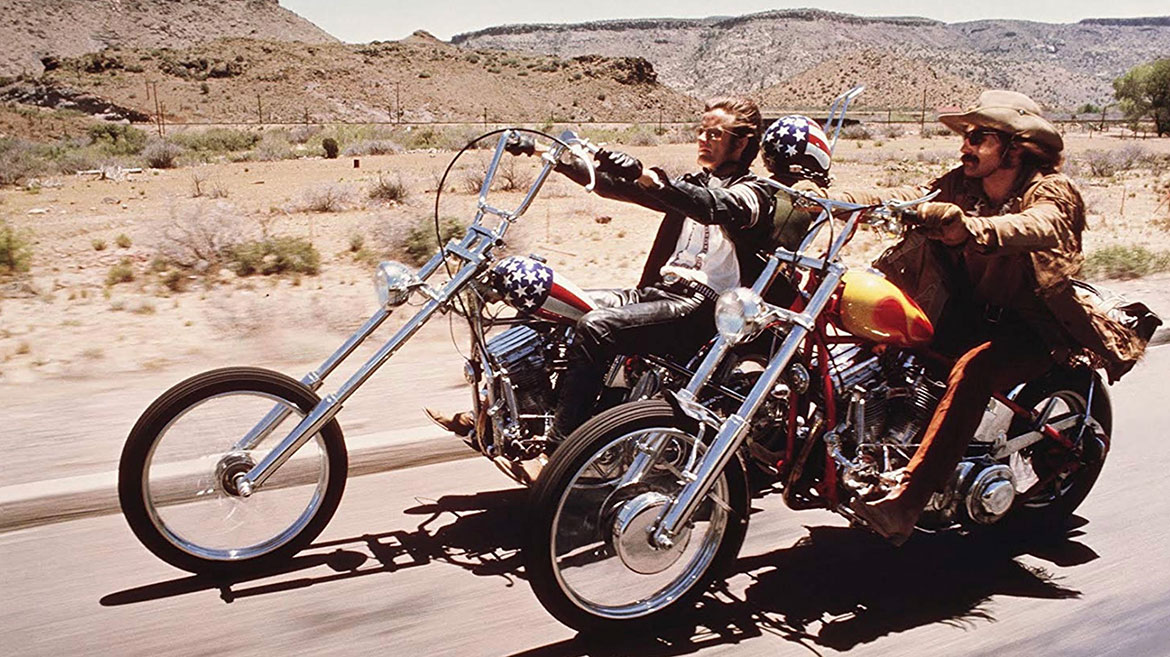
Harley-Davidson Knucklehead Chopper c.1973 (engine: 1941)
The chopper is a type of customised motorcycle that emerged in California in the late 1950s. It is perhaps the most extreme of all custom motorcycle styles, often using radically modified steering angles and lengthened forks for a stretched-out appearance. They can be built from an original motorcycle which is modified (‘chopped’), or from scratch. These custom bikes had exuberant paintwork, indulgent chrome, wildly extended front forks and high, ‘ape-hanger’ handlebars, famously featured in Dennis Hopper’s 1969 film Easy Rider.

Motorcycles on Screen
Since the beginning of the twentieth century, filmmakers have been drawn to the uniquely cinematic appeal of the motorcycle. The breakneck speed, the unmistakable designs, the ravenously revving engines: motorcycles provide myriad aesthetic possibilities for the screen. Beyond the sound and fury of the bikes themselves, the exoticism of biker gangs and the utilitarian usefulness of motorcycles as common transport offer bases for tales of great danger alongside incisive portraits of life on the ground.
Blending the seminal Hollywood classics that helped define motorcycles in the popular Western imagination with lesser known but equally captivating entries in the film canon, ‘Motorcycles on Screen’ dives into portrayals of the early years of motorcycling, and examines what possibilities may lie ahead of us in the future. It looks at how motorcycles and motorcycle culture have been used in cinema to depict ideas of freedom, danger and fraternity around the world, and how the motorcycle has been used as a potent symbol in experimental filmmaking.
The Motorcycle Diaries 2004
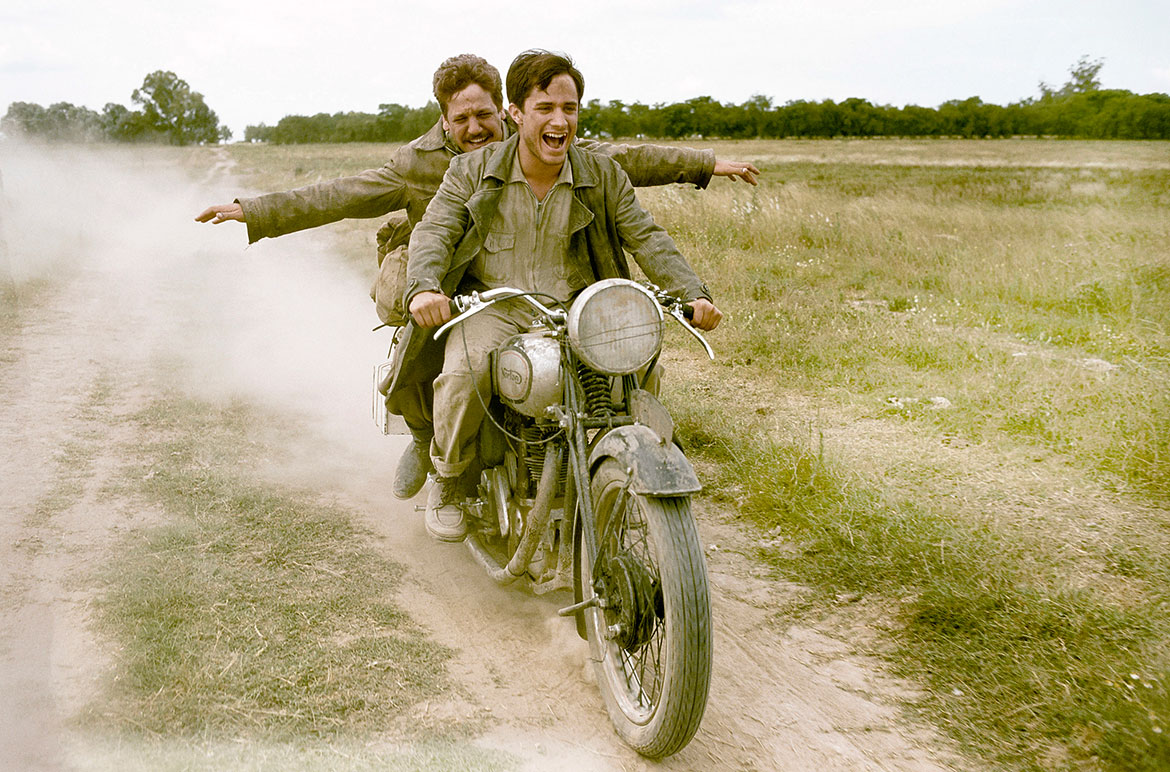
While representations of motorcycles permeate almost every film genre, the power and relative unpredictability of early bikes meant their primary role was to facilitate stunts and comedy. Each of the big three screen clowns — Chaplin, Keaton, Lloyd — took advantage of the machine’s potential for slapstick pratfalls with destructive chase sequences in films such as Mabel at the Wheel 1914 and Get Out and Get Under 1920. Its capacity for adventure steered some of the first travel films (such as A Motorcycle Trip among the Clouds 1926), in which intrepid explorers would traverse remote parts of the world, whose cinematic language continues to be felt in road movies like The Motorcycle Diaries 2004.
RELATED: Read about the bikes in ‘THE MOTORCYCLE’ exhibition
Roman Holiday 1953
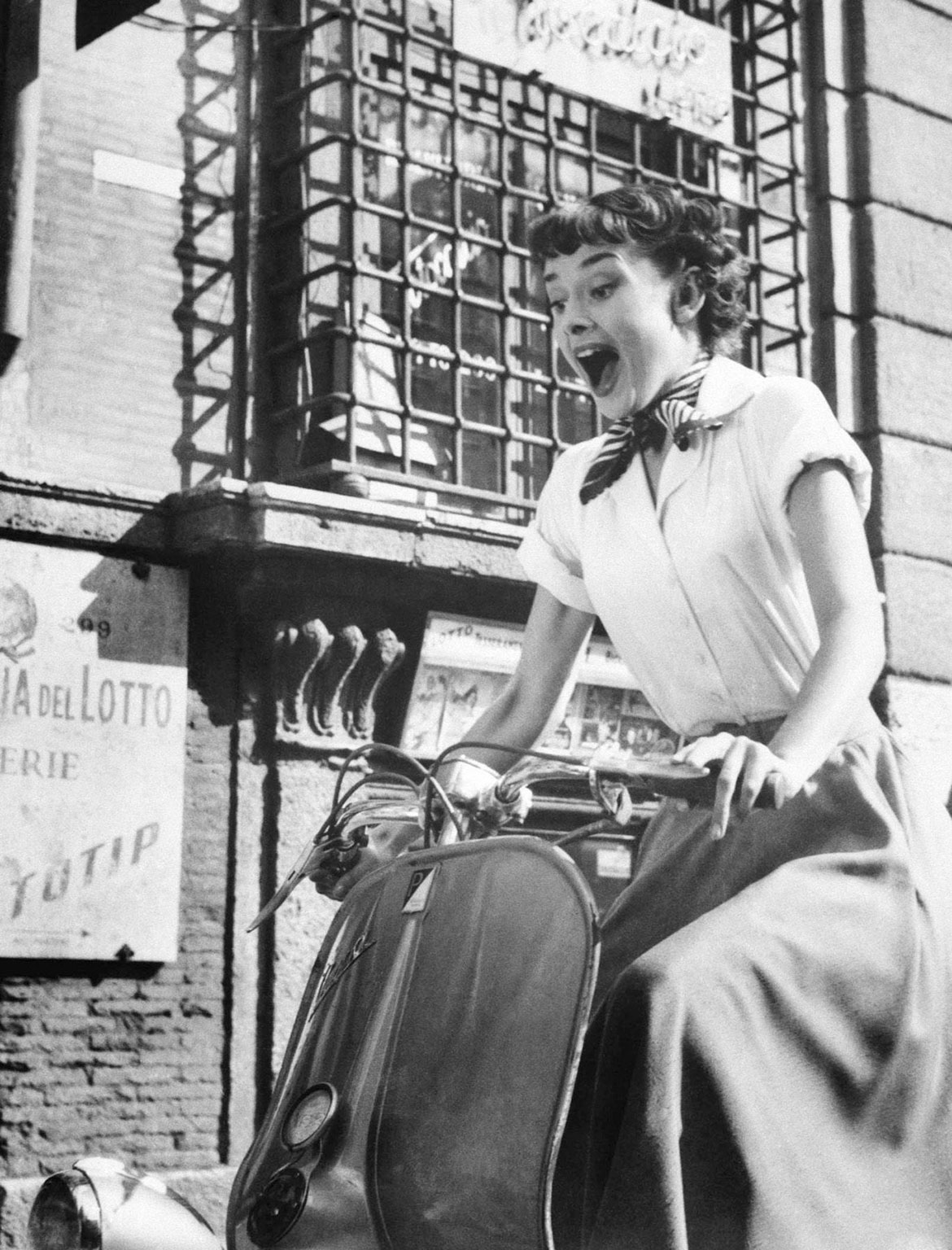
The Wild One 1953

Despite some notable exceptions — the resplendent official vehicle of Groucho Marx’s Rufus T Firefly in Duck Soup 1933, for one — the sound era initially led to a quiet period for motorcycles on screen, as new technical limitations and audience tastes pivoted towards different kinds of drama. However, this would change in 1953 with two of the most indelible images in cinema history: Audrey Hepburn on a Vespa, joyously careening through the bustling streets in Roman Holiday; and Marlon Brando decked out in leather, the epitome of mid-century American cool, leaning back against his Triumph Thunderbird in The Wild One. These competing visions of freedom from the two burgeoning superstars would play a key role in defining the motorcycle as an instrument of rebellion in popular culture for decades to come.
That sense of rebellion would be potently harnessed in perhaps the most iconic screen portrait of motorcycle culture: Dennis Hopper’s Easy Rider 1969. It is a film that understands and interlinks the thematic threads of freedom, danger and fraternity. Easy Rider acknowledges that these are not discrete ideas, but instead that they are often inescapably linked. As a story about outsiders on the open road, under threat and unable to assimilate into mainstream society, it also offers a counterculture parallel to the biker film genre.
Stray Cat Rock: Delinquent Girl Boss 1970
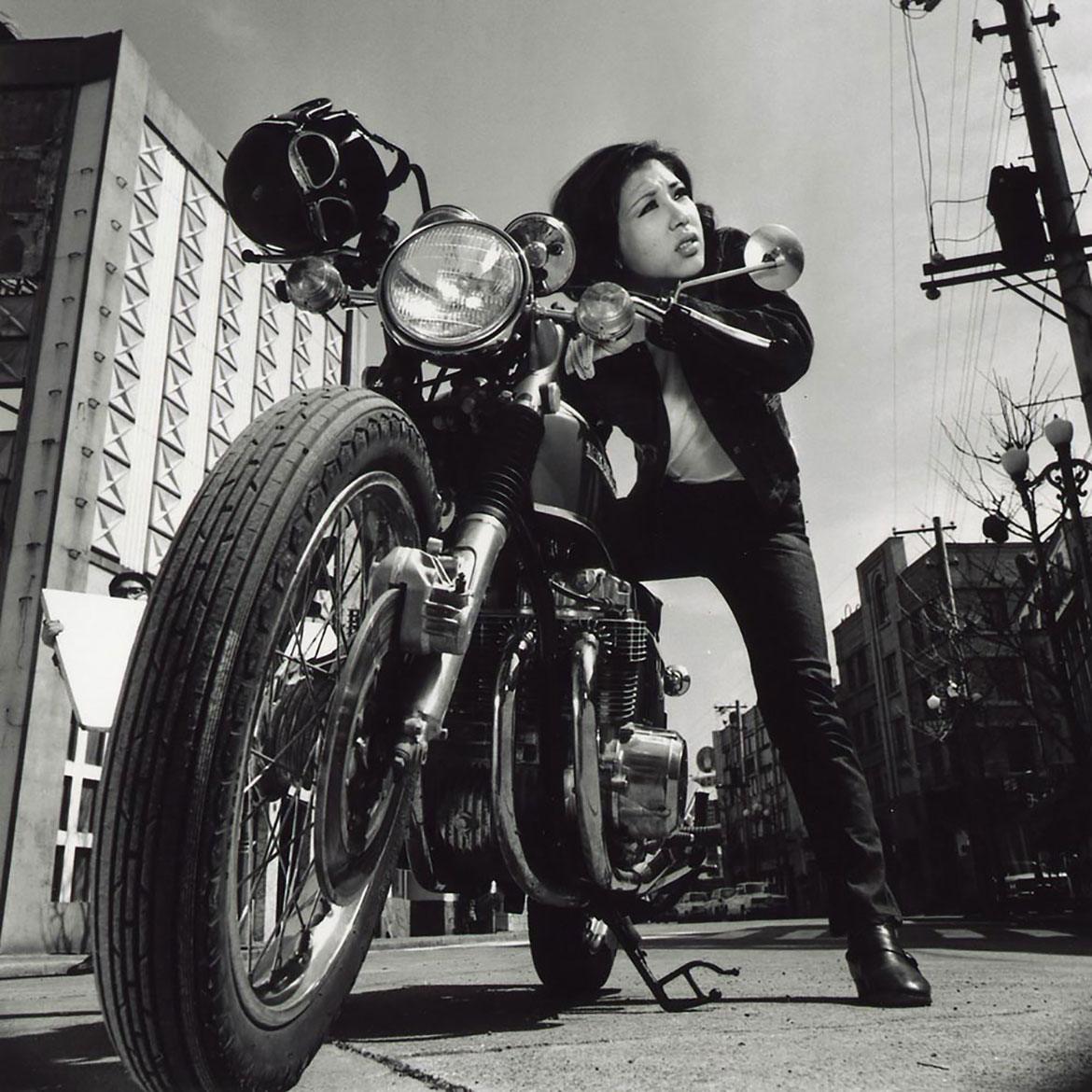
The Loveless 1981

Rumble Fish 1983
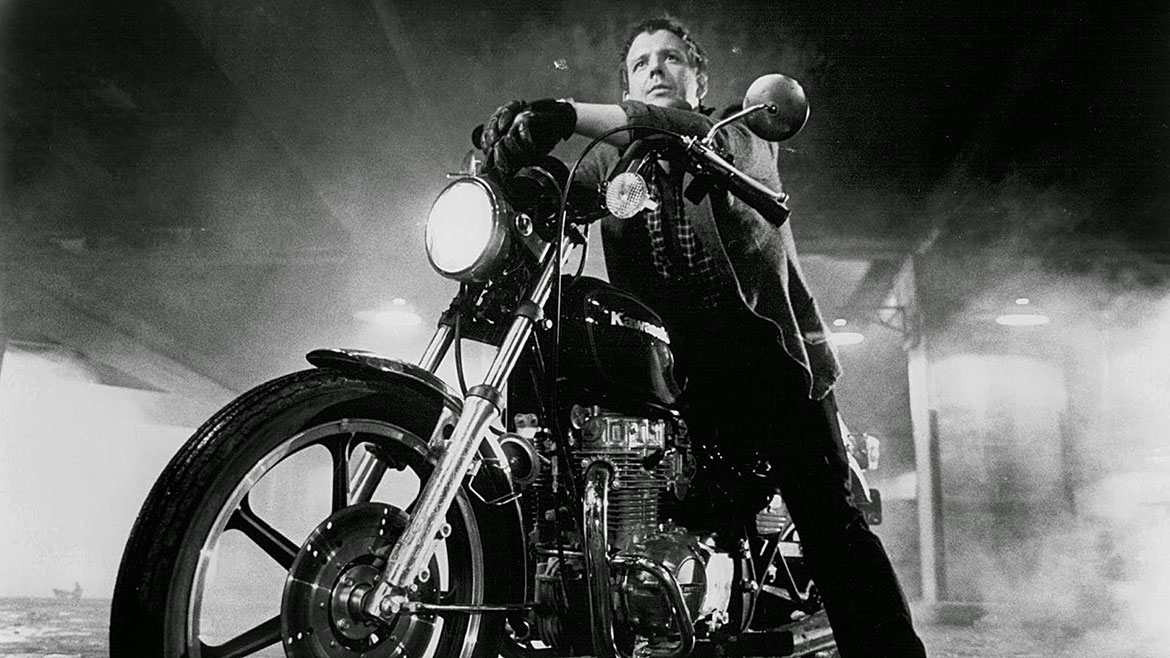
The rise of biker gangs in postwar America — driven in part by the yearning of returned servicemen, freshly trained in motorcycleriding, for camaraderie — provoked a surge of films showing (largely fictionalised) accounts of life and death within their cloistered worlds. This fascination would spread internationally with films such as the Japanese Stray Cat Rock series, which follows an all-female gang of bikers battling it out in Shinjuku, and the Australian cult classic, Stone 1974. Filmmakers were fascinated by biker gangs not only for the dramatic possibilities in fatal rivalries and criminal enterprises, but also because of the bonds shared between members of the groups. Films such as The Loveless 1981 and Rumble Fish 1983 explore these intimate ties and how personal and group identity can blur together within communities.
Akira 1988

Finke: There and Back 2018
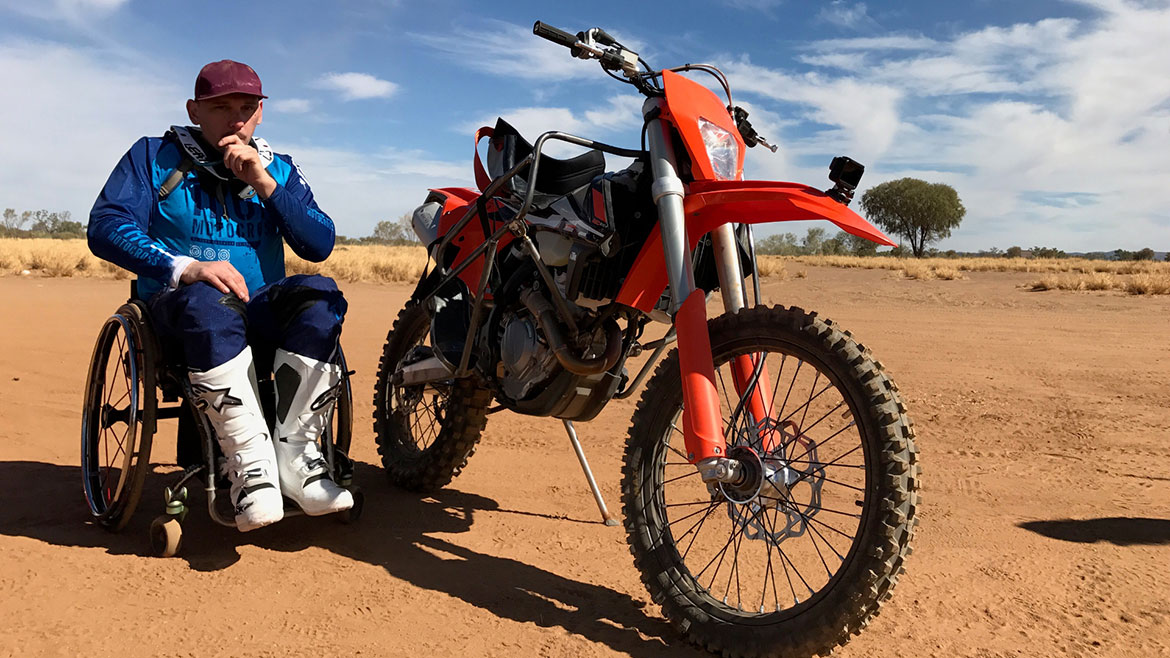
The Wild Goose Lake 2019
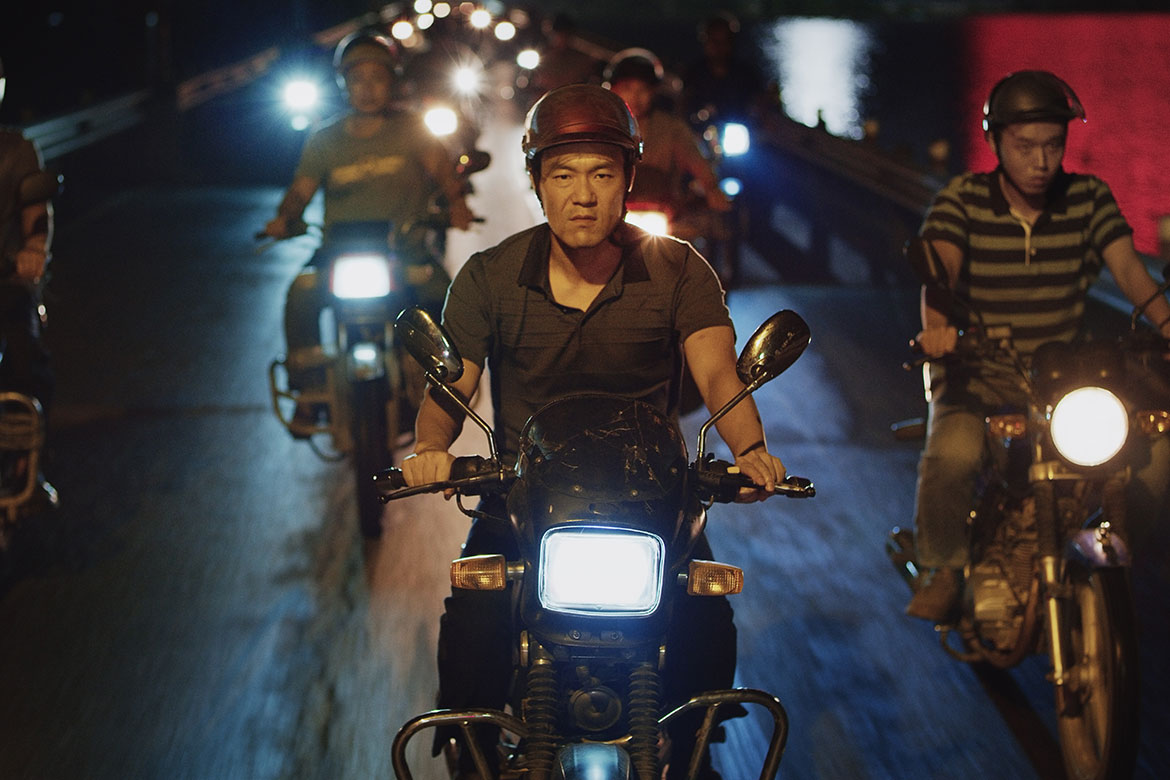
‘Motorcycles on Screen’ also looks ahead for motorcycles, presenting speculative visions of the designs and roles of bikes in future societies. From the custom vehicles mounted in the Mad Max films to the light cycles of Tron 1982, through to the striking red bike Kaneda rides through Neo Tokyo in Akira 1988, the practicality and dynamism of motorcycles means they regularly play a central part in shaping filmmakers’ representations of futuristic worlds.
It is important to note, too, that the history of motorcycles in cinema is still being written: new entries to the canon continue to emerge in exciting and unexpected ways. Films such as Dylan River’s riveting documentary Finke: There and Back 2018, which surveys the famed dirt bike race in the Australian outback, and Diao Yinan’s Chinese crime saga The Wild Goose Lake 2019, showcase the ongoing breadth and richness of these machines on screen.
Rob Hughes is Assistant Curator, Australian Cinémathèque, QAGOMA
Dip into our Cinema blogs / View the Cinémathèque’s ongoing program / Subscribe to QAGOMA YouTube to go behind-the-scenes
QAGOMA is the only Australian art gallery with purpose-built facilities dedicated to film and the moving image. The Australian Cinémathèque at the Gallery of Modern Art (GOMA) provides an ongoing program of film and video that you’re unlikely to see elsewhere, offering a rich and diverse experience of the moving image, showcasing the work of influential filmmakers and international cinema, rare 35mm prints, recent restorations and silent films with live musical accompaniment on the Gallery’s Wurlitzer organ originally installed in Brisbane’s Regent Theatre in November 1929.
Featured image: Production still from The Wild One1953 / Director: László Benedek
#MotorcycleGOMA #QAGOMA
